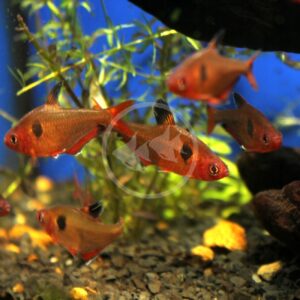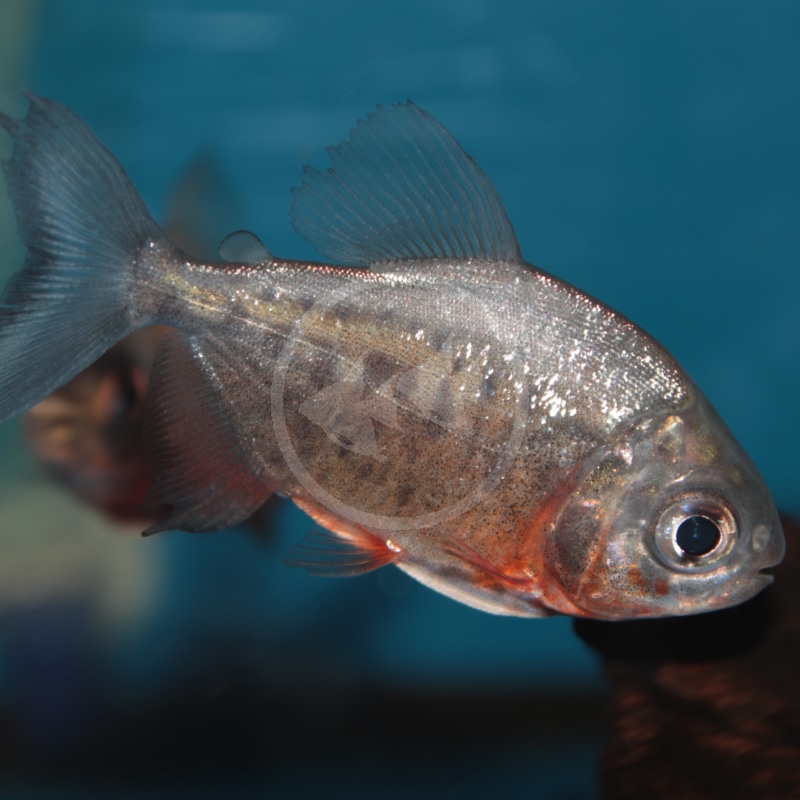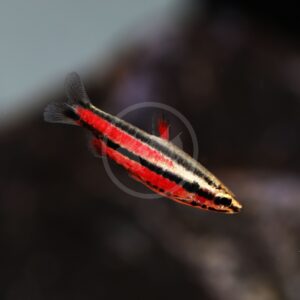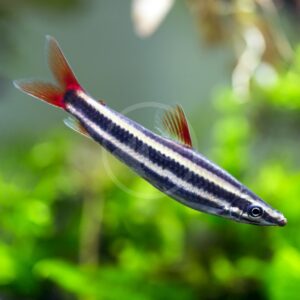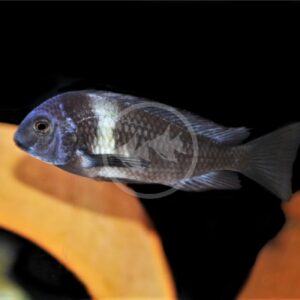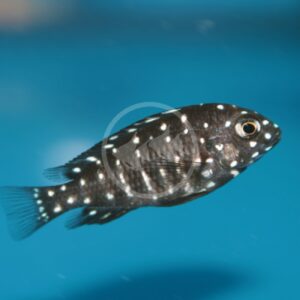TETRA – PACU RED BELLIED
Piaractus brachypomus
$6.99 – $49.99
The Red Bellied Pacu, or simply Pacu for short, also referred to sometimes as the False Piranha, are found widely throughout the Amazon and Rio Orinoco basins that expand across many countries in South America. The term ‘Red Bellied’ in its name is only applicable to juvenile specimens, as they lose this attractive red color as they mature. Often sold as cute fish at 4″ or less, Pacu grow into enormous animals that are best left admired in the wild, public aquaria or to the few extremely dedicated aquarists that have the facilities to house an adult. On average, an adult Pacu in captivity can grow 24″ to 30″ in length. Juvenile Pacu grow up quicker than you think, especially when their diets are being supplemented correctly, making this fish a serious commitment in all aspects of aquatic husbandry (please see ‘Diet and Care Requirements’ below). For its large adult size however, the Pacu is a relatively non-aggressive fish so long as it is not kept with tank mates that can become a meal. Diagnosable differences between male and female Pacu are unknown. Note: Populations of Pacu have been found within rivers and ponds of the United States likely as a result from irresponsible hobbyists releasing specimens that got too large to care for. While Pacu will not likely survive as well in colder regions such as Wisconsin, those in warmer regions could and this is unhealthy for the biodiversity of our native ecosystems. We urge hobbyists to not do this, and to please reach out to our store, Aquatics Unlimited, to either surrender your Pacu to us or for resources to help you with your fish.
Care Level: Advanced
Temperament: Peaceful
Live Plant Safe: No
General Description: The Red Bellied Pacu, or simply Pacu for short, also referred to sometimes as the False Piranha, are found widely throughout the Amazon and Rio Orinoco basins that expand across many countries in South America. The term ‘Red Bellied’ in its name is only applicable to juvenile specimens, as they lose this attractive red color as they mature. Often sold as cute fish at 4″ or less, Pacu grow into enormous animals that are best left admired in the wild, public aquaria or to the few extremely dedicated aquarists that have the facilities to house an adult. On average, an adult Pacu in captivity can grow 24″ to 30″ in length. Juvenile Pacu grow up quicker than you think, especially when their diets are being supplemented correctly, making this fish a serious commitment in all aspects of aquatic husbandry (please see ‘Diet and Care Requirements’ below). For its large adult size however, the Pacu is a relatively non-aggressive fish so long as it is not kept with tank mates that can become a meal. Diagnosable differences between male and female Pacu are unknown. Note: Populations of Pacu have been found within rivers and ponds of the United States likely as a result from irresponsible hobbyists releasing specimens that got too large to care for. While Pacu will not likely survive as well in colder regions such as Wisconsin, those in warmer regions could and this is unhealthy for the biodiversity of our native ecosystems. We urge hobbyists to not do this, and to please reach out to our store, Aquatics Unlimited, to either surrender your Pacu to us or for resources to help you with your fish.
Diet Requirements: Pacu are opportunistic in nature consuming fish, crustaceans, insects, and fallen fruits. One of the unfussiest eaters, it typically desires more of a vegetable-rich diet in captivity. Such options can include frozen foods with Spirulina algae, floating sticks, and sinking pellets. Offer plenty of fresh fruits and vegetables such as romaine lettuce, spinach, cabbage, carrot, grapes and apples. Appropriate frozen food options will vary depending on the size of your specimen. Protein-based frozen food options can include frozen brine shrimp, mussels, krill, silverside fish, and prawns. Variety is the spice of life in order to maintain color, immune function and longevity of your fish. We discourage feeding live fish to Pacu because they are often of little nutritional value and increase the risk of introducing disease. Pacu are notorious for becoming greedy and will often learn to “beg” for food, but feeding only once a day should be exercised for juveniles. Adult specimens may only need to be fed twice a week. Obesity is a big problem in Pacu, which will only be a detriment to their health in the long run.
Care Requirements: A minimum 125 gallon aquarium is needed at the very least for a small Pacu. The realistic long term accommodations for a juvenile Pacu to mature into an adult requires a phenomenal volume of water of at least a couple thousand gallons – which still barely allows for natural movement as it would freely in the wild. Juvenile Pacu may shoal, but adults tend to be more solitary and this definitely depends on the accomodations of their living quarters. Pacu cannot be put into a biologically immature aquarium. Weekly water changes are necessary to keep water parameters in good condition (Nitrates < 30 ppm). Equipping the aquarium with several canister filters, or a sump system, is also needed to maintain a healthier environment for this species and combat the amount of waste it produces. A Pacu will be relatively indifferent to decor, especially as an adult, but some stacked rocks to create caves for younger specimens to hide, or driftwood, may add some pizzazz to the aquarium. A lot of unobstructed and open swimming space should be of priority, and the aquarium needs to be well oxygenated. Typical tank mates include Arowana, large catfish and more docile larger cichlids. Recommended water conditions, 72-78° F, KH 0-15, pH 4.5-7.5.
Purchase Size: Small: 1-1/2” to 2-1/2”; Medium: 2-3/4” to 5”
Note: Your item may not look identical to the image provided due to variation within species. Purchase sizes are approximate.
Dry goods orders are shipped via US Postal Service or UPS to the address provided at checkout based on the selection made in your website shopping cart. Product is carefully packed to help prevent any damage during shipping. Once processed you will receive a shipment notification via email with tracking number, and delivery notification. Please allow 48 hours for processing after your order is placed.
Perishable items (i.e. live plants, refrigerated/frozen foods) are shipped via US Postal Service 2-3 day to the address provided at checkout for a $25.00 flat rate charge. Items are packed with secure packing material and heat, cold, or Cryo packs as needed to maintain safe temperatures during transit. If one or more perishable items are in the shopping cart at checkout the $25.00 perishable shipping charge will automatically appear and need to be selected. Once processed you will receive a shipment notification via email with tracking number. Please allow 48 hours for processing after your order is placed.
Livestock (i.e. fish, invertebrates, coral) are shipped via UPS Overnight to the address provided at checkout for a $55.00 flat rate charge. Livestock is packed in insulated styrofoam boxes with secure packing material and heat, cold, or Cryo packs as needed to maintain safe temperatures during transit. If one or more livestock items are in the shopping cart at checkout the $55.00 livestock shipping charge will automatically appear and need to be selected. Livestock is shipped Monday through Wednesday ONLY (no weekend delivery is available) weather permitting, and we reserve the right to delay shipping until conditions are appropriate for safe arrival. Once your order is placed we will contact you to arrange the best shipping date based on these criteria. Someone must be available to receive the livestock order on the first delivery attempt. Once processed you will receive a shipment notification via email with tracking number. Please allow 48 hours for processing after your order is placed.
For mixed dry goods/perishable & livestock orders items will be shipped via their corresponding shipping methods outlined above. Dry goods will be shipped via US Postal Service or UPS based on your selection and checkout, while livestock will ship via UPS Overnight for a $55.00 flat rate charge. You will receive separate notifications and tracking numbers for the dry goods and livestock. Please note due to different carriers and shipping methods dry goods and livestock may arrive on different days.
Related products
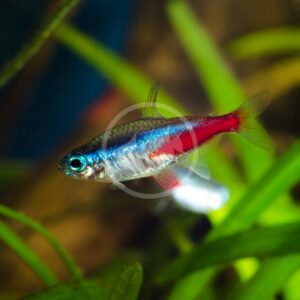
TETRA – NEON
Paracheirodon innesi
$6.99
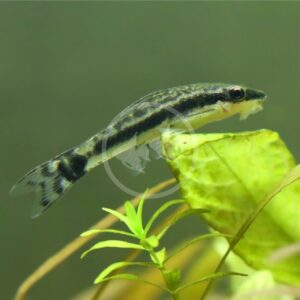
CATFISH – OTOCINCLUS
Otocinclus vittatus
$6.99
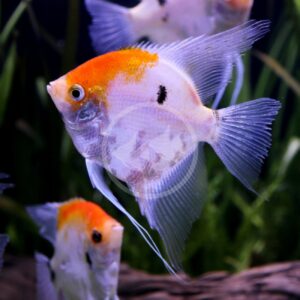
ANGELFISH – FW KOI
Pterophyllum scalare
$10.49 – $59.99
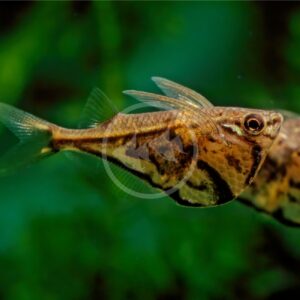
TETRA – HATCHETFISH MARBLE
Carnegiella strigata
$9.99
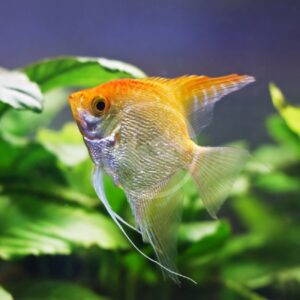
ANGELFISH – FW GOLD
Pterophyllum scalare
$9.99 – $19.99
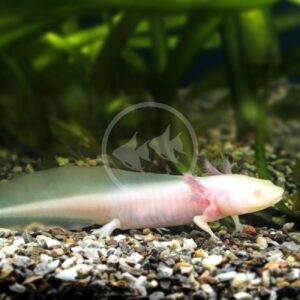
AXOLOTL – ALBINO
Ambystoma mexicanum
$99.99 – $149.99
